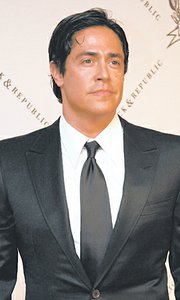Battle Continues Over Rock & Republic
Court documents tell the behind-the-scenes story of the bankrupt premium-denim brand.
The battle over the future of Rock & Republic, the premium-denim brand that filed for bankruptcy April 1, has taken a bitter turn, according to court documents that detail a behind-the-scenes fight over cash, close-outs and trademark ownership.
Rock & Republic’s biggest secured creditor, Richard Koral, is holding back nearly $1 million he owes the blue-jeans maker and putting a crimp on Rock & Republic’s ability to sell as much as $6 million in close-out goods destined for off-price retailers, according to court documents.
A hearing to resolve these matters has been scheduled for April 28 in U.S. Bankruptcy Court in New York, said Rock & Republic attorney Arthur Goldstein.
Rock & Republic, based in Culver City, Calif., was forced to file for Chapter 11 bankruptcy after it was unable to repay a $15 million loan made more than two years ago by RKF LLC, owned by Koral, a veteran Los Angeles apparel executive who for years has been selling overstock and close-out apparel to discounters and off-price stores. He is also the brother of Peter Koral, co-founder of the high-end blue-jeans line 7 For All Mankind, now owned by VF Corp.
Richard Koral not only loaned millions to the 8-year-old label, which staked its brand name as collateral, but since Aug. 1, 2008, he has had an exclusive agreement to sell Rock & Republic’s close-out and irregular goods to stores such as Ross Dress for Less and T.J. Maxx.
According to court documents, when Koral found out he wasn’t going to be repaid his $15 million, which was due April 2, he refused to turn over $800,000 owed Rock & Republic from off-price merchandise he received in January. He then notified The CIT Group, the factor for Rock & Republic and Koral, that he was withholding payment, court documents show.
CIT then charged back the $800,000 to Rock & Republic’s account, making the denim company unable to receive more CIT financing. Since then, court documents show that CIT has reversed the chargeback and is monitoring the situation.
“Since the Chapter 11 filings, Koral has embarked on a course of conduct deliberately intended to put financial pressure on the debtors so that Koral can obtain an extension of the [distribution] agreement and also receive concessions from the debtors to which it is not entitled,” according to court documents. “Koral has also unjustly refused shipments of orders of merchandise from the debtors. Since the debtors are prohibited under the agreement from selling the merchandise to other customers in the United States, Koral’s refusal to accept the orders places severe financial pressure” on Rock & Republic, according to the court documents.
In court filings, the Los Angeles label said it is holding off-price apparel with a $6 million wholesale value that needs to be sold immediately.
“Under the current situation, the debtors have only one customer for this inventory, Koral, and that customer refuses to pay for the inventory or take delivery when it suits its own purposes. Therefore, the debtors require the agreement to be rejected so that the debtors are free to sell their inventory to whomever they wish at the best possible price,” Rock & Republic said in court papers.
Neither Koral nor his attorney, Jay Goffman, returned phone calls for comment.
Meanwhile, Koral is trying to get the bankruptcy-court venue changed from New York to Los Angeles, another matter to be heard in New York on May 6, Goldstein said.
Also on the court docket was a request by Rock & Republic to break its retail leases for two store locations in New York and a Beverly Hills store location at 319 N. Rodeo Drive that has never been occupied by the California label. That request was granted on April 22.
The blue-jeans label still operates a store at 103 S. Robertson Blvd. in Los Angeles and two outlet stores, located in Camarillo, Calif., and Cabazon, Calif. Rapid rise
Rock & Republic was founded in 2002 by Michael Ball, the current chief executive, who was an upstart apparel executive with a bad-boy image. As a kid, Ball got into a few fights and spent a short time in jail, according to newspaper articles. But the world of hard knocks was perfect for the competitive denim business.
Rock & Republic’s premium-denim jeans were hot sellers at high-end retailers such as Nordstrom, Neiman Marcus, Bergdorf Goodman and Bloomingdale’s. The collection showed on the runway at fashion weeks in Los Angeles, New York and San Francisco. And the company started opening stores.
But the recession took a bite out of the premium-denim market, and many prominent labels that sold for $200 to $300 began re-evaluating their price points.
Court documents show that Rock & Republic’s revenues were $97 million with a $3 million profit in 2009. In court papers, the company listed assets valued at $50 million to $100 million and liabilities of up to $50 million.
With the possibility of branding its name worldwide, Rock & Republic is shopping around for a financial backer or strategic partner to emerge quickly from Chapter 11 bankruptcy.
Rock & Republic has retained Marvin Traub of Marvin Traub Associates as a consultant and adviser. Traub was chief executive and president of Bloomingdale’s for 22 years until he left in 1992. Marvin Traub Associates has a joint venture with retail-focused investment banking firm Financo Inc.
Rock & Republic has also retained Atlas Strategic Advisors, an investment banker and financial adviser.
Geoffrey Lurie, who helped bring outdoor-gear maker The North Face Inc. out of bankruptcy in the late 1990s, was appointed the chief restructuring officer. He said the company is still shipping orders for Fall 2010 and taking orders for Spring 2011.
“The decision to file for Chapter 11 was difficult but was entirely driven by the desire to create a stronger balance-sheet structure, which will allow the company to focus on and build its core apparel and footwear business,” Lurie said. “Rock & Republic remains a growing brand and a profitable company. We look forward to emerging from the Chapter 11 process by the end of the summer stronger, more focused and with a clear road map to grow our brand.”
























